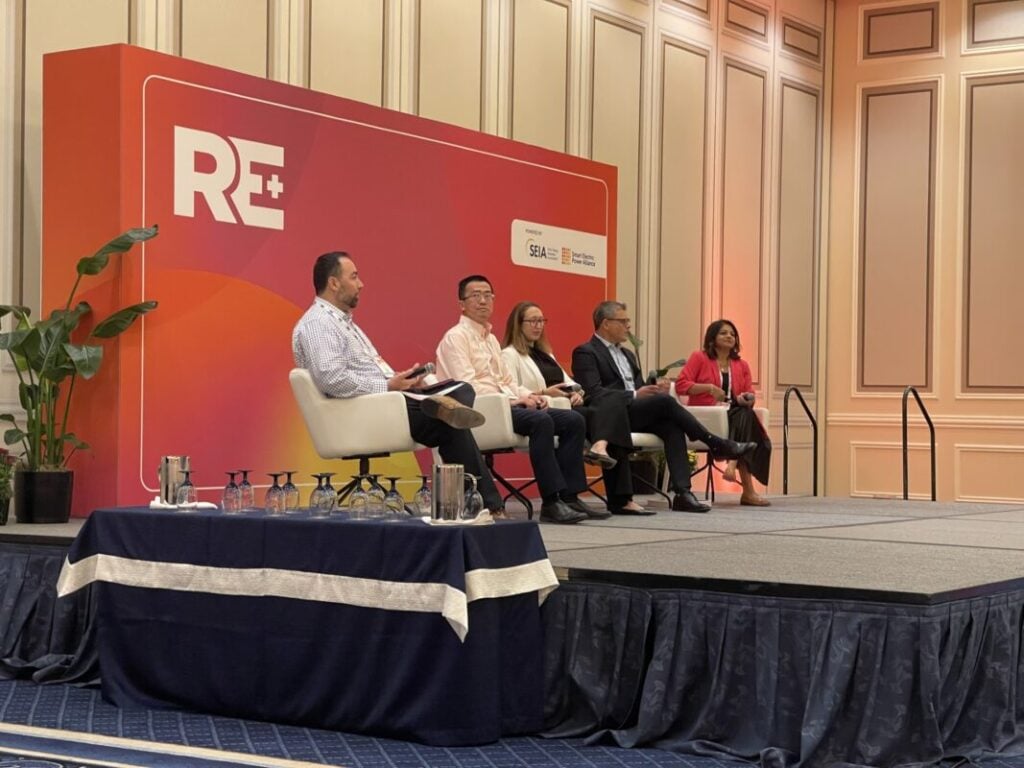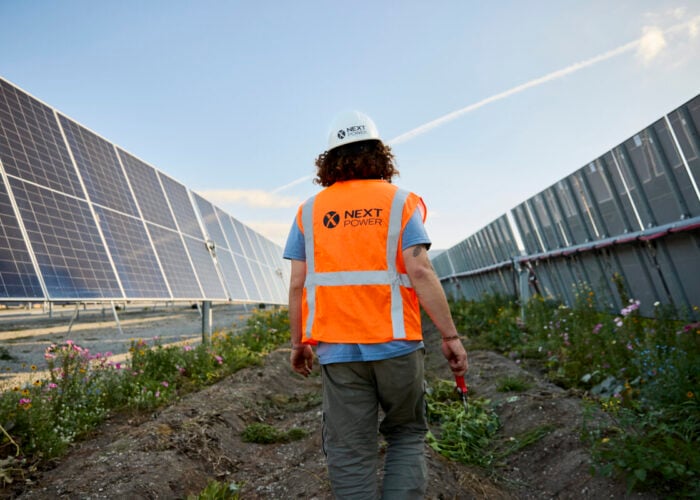
At last week’s RE+ trade show in Las Vegas, US, industry leaders pointed out the resilience of the US solar sector, despite acknowledging that the “One Big, Beautiful Bill” (OBBB) Act has undermined the growth of the US solar industry by shortening eligibility timelines for Inflation Reduction Act (IRA) support.
The new budget rules require solar projects to start construction by 4 July 2026, or be operational by the end of 2027, to qualify for the 45E Investment Tax Credit (ITC) or 45Y Production Tax Credit (PTC).
Try Premium for just $1
- Full premium access for the first month at only $1
- Converts to an annual rate after 30 days unless cancelled
- Cancel anytime during the trial period
Premium Benefits
- Expert industry analysis and interviews
- Digital access to PV Tech Power journal
- Exclusive event discounts
Or get the full Premium subscription right away
Or continue reading this article for free
These changes are having a significant impact on US solar companies and forcing them to rethink how they do business in the country.
Alex Zhu, CEO of ES Foundry, who spoke exclusively to PV Tech Premium about this topic last week, said that the company’s business decisions have been made with the IRA tax credits in mind.
“We started ES Foundry and brought back manufacturing to the US purely because of policy, because of the domestic content adder to get the additional 10% of the ITC,” he said
Julia Bell, chief investment officer at CleanCapital, said that these tax credits were important for her company too. “Domestic content is a part of every one of our discussions, ” she said. “We’re always weighing the benefit of the adder versus the cost of purchasing domestically.”
Supply chain challenges
Regarding foreign entity of concern (FEOC) regulations, which amount to a restriction on imports of products from China, the issue of supply chain transparency has become a key concern throughout the industry.
Companies are now under pressure to track the origin of system components at every stage of production. This goes beyond meeting regulatory requirements to meet the expectations of investors and lenders.
Bell emphasised: “Transparency is really important because, as we see from our lenders and investors, everyone wants to know where the products are coming from at each step of the pathway.”
The challenge is especially severe because many manufacturers depend on intricate global supply chains, where information about subcomponents may be lacking.
Elissa Pierce, solar module supply chain analyst at Wood Mackenzie, highlighted that upstream component manufacturing has not kept pace with module manufacturing in the US. Module manufacturers mostly rely on imported components, which makes them vulnerable to tariffs, legislation and other global supply chain disruptions.
Jessica Lawrence-Vaca, chief commercial officer at Array Technologies, acknowledged the company has faced challenges confirming that its supply chain is entirely FEOC compliant, given the bill’s vagueness. Lawrence-Vaca was one of many speakers who called for the solar industry to advocate for making FEOC workable.
Other supply chain policies continue to hang over the US solar sector, including the Uyghur Forced Labour Prevention Act (UFLPA). According to Zhu: “For the whole value chain, traceability is important because we’ve seen policy challenges in the past with the UFLPA becoming an issue for all imports.”
New antidumping and countervailing duties (AD/CVD) are forcing manufacturers in China, Malaysia, Thailand, and Vietnam to shut down or relocate. As a result, India, Laos, Indonesia, and the Philippines are seeing a rise in solar manufacturing capacity, but even these countries have seen increased pressure from AD/CVD enforcement.
Nikita Trivedi, director of supplier management and strategic shared services at Southern Company, said the company has had to “get creative about manufacturing slotting and making progress payments to secure assets,” adding: “Power transformers have a 30-month lead time. So before my solar project is done, I have to have a transformer lined up.”
The industry is also struggling with complex ownership issues, particularly in light of the FEOC rules. Zhu explained: “Following OBBB guidance, customers coming to us about their due diligence ask, ‘What’s your ownership structure?’ ‘Who owns you?’ ‘What debt do you have?’”
’Eager to safe harbour as much as we can’
While major shakeups are occurring throughout the industry, speakers also emphasised the importance of weathering the current storm.
Bell shared: “We’ve been eager to safe harbour as much as we can, as I think everyone has across the industry. We’ve actually taken advantage of both ways to begin construction—both the 5% method and physical works.”
Ryan Pfaff, executive vice president at EDF Renewables, confirmed: “Most of the larger companies have safe harboured. There will be some pain moving forward; some companies don’t have the cash to safe harbour, so they are already facing significant challenges.”
As Stacy J. Ettinger, vice president of supply chain and trade at the Solar Energy Industries Association (SEIA), and others maintained: “the industry will continue to grow out of necessity.”
Trivedi declared: “We are bullish on renewables. Of our US$13 billion additional capex, it is heavily geared towards batteries and solar. There is so much power demand coming at us that we need to meet quickly.”
John Smirnow, principal at Smirnow Law, advocated presenting US solar manufacturing as “a national security imperative.” Lawrence-Vaca shared a similar sentiment, saying: “the game is to keep the lights on”, and the low levelised cost of electricity (LCOE) and scalability of solar mean it remains an attractive technology.
Strong demand and community solar
Despite facing significant challenges from the OBBB, the US solar industry continues to thrive, driven by strong demand from data centres and electrification.
Although the OBBB has introduced new hurdles compared to the IRA framework, industry leaders are finding ways to adapt through safe harbour strategies, supply chain enhancements and coalition building. There is widespread agreement that solar will keep growing, thanks to its cost benefits and rapid deployment capabilities, even as tax incentives eventually come to an end.
In the last few weeks, a number of states have seen increased appetite for small-scale solar in particular, as a way to meet electricity demand and give local communities a degree of control over the power projects being built in their areas.
In California, the California Solar and Storage Association (CALSSA) has proposed fines for utilities for delaying the community solar approval process, while Wisconsin Republicans have introduced a bill to grant local groups more power over approvals for community solar projects.
Arevon Energy CEO Kevin Smith noted the importance of building relationships within communities, noting: “Community engagement activities are critical right now. Communities speak on your behalf, and the volatility that comes from not using renewables won’t reflect well on the administration.”
PV Tech publisher Solar Media will host the 12th edition of the Solar & Storage Finance USA event on 21-22 October 2025 in New York. Panellists will discuss the fate of US solar and storage in a post-subsidy world, the evolving economics of standalone BESS and de-risking solar and storage supply chains. Book your tickets for the event on the official website.






